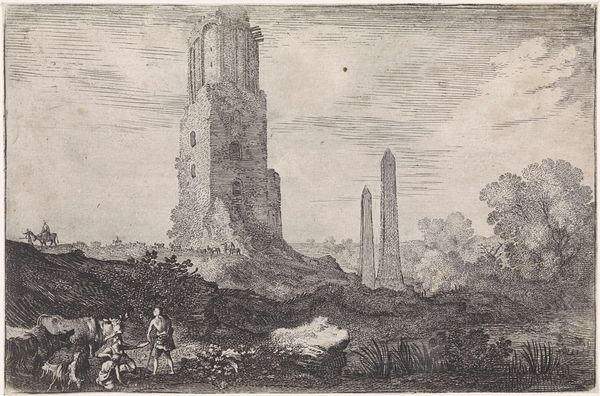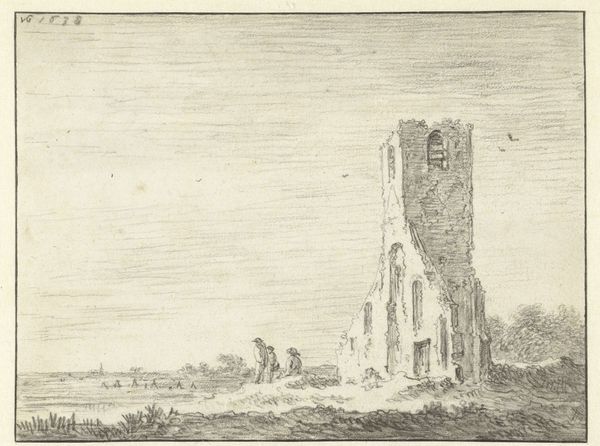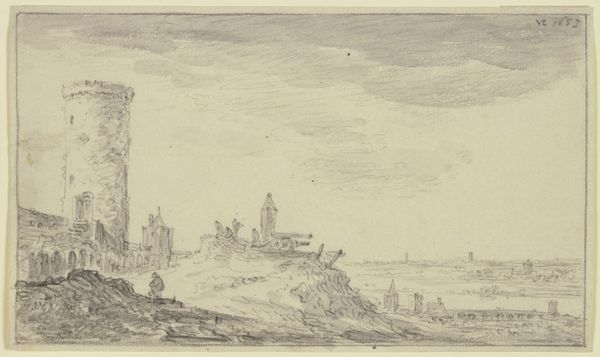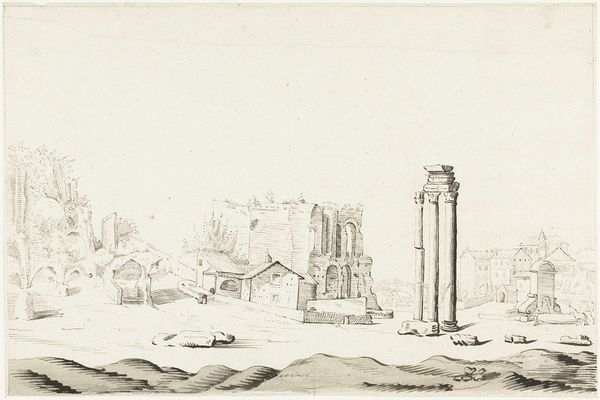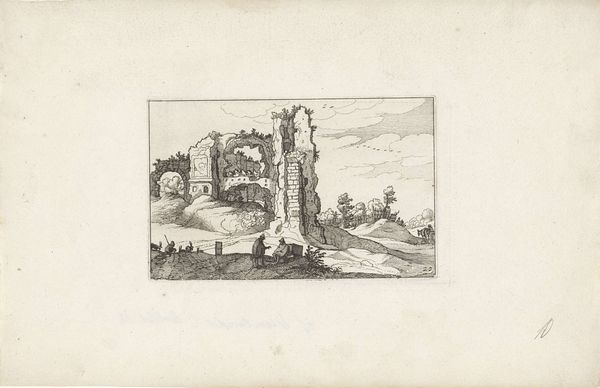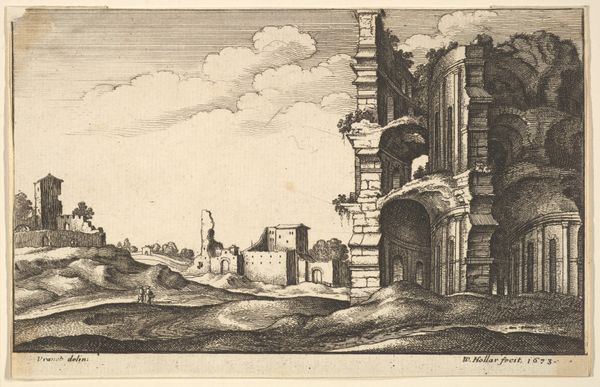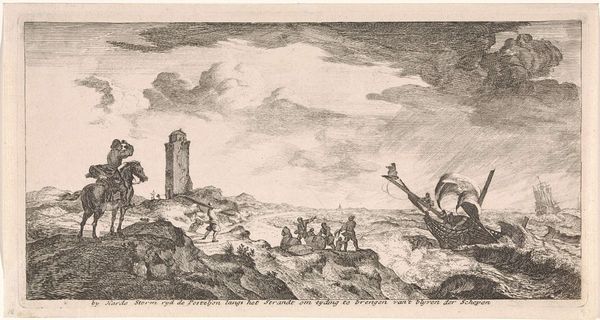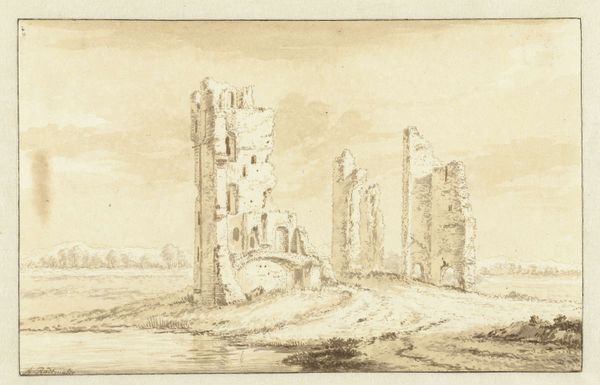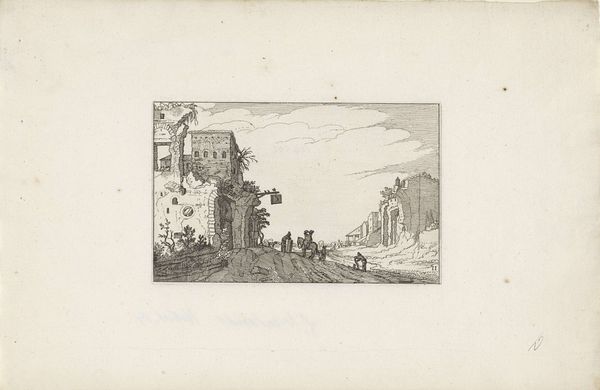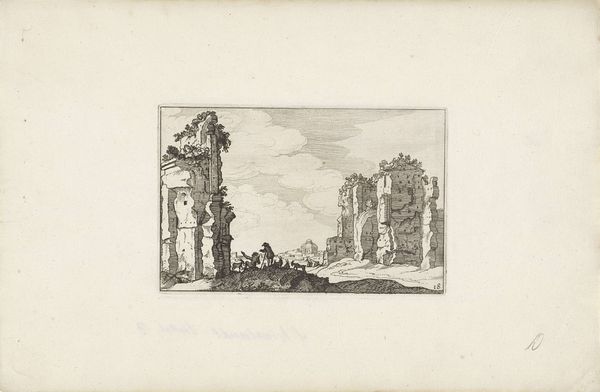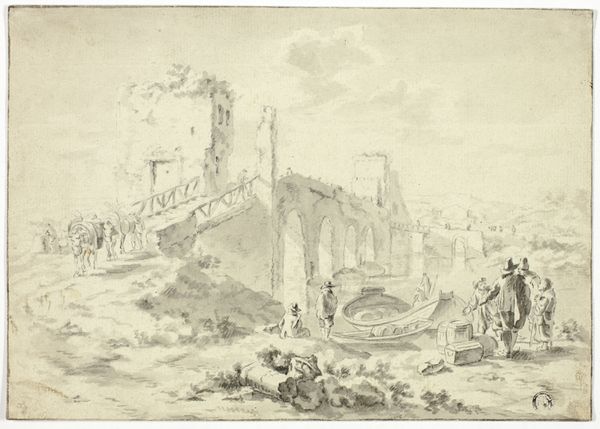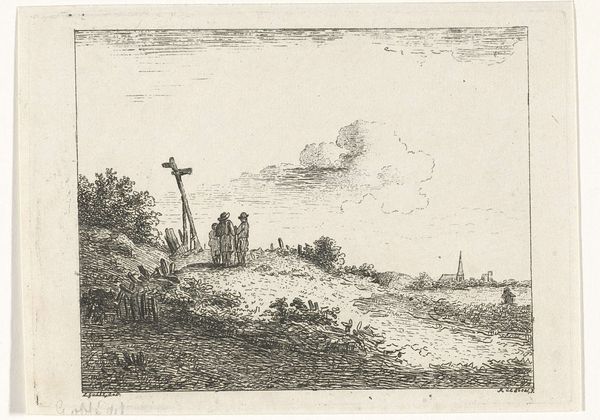
drawing, print, etching
#
drawing
#
baroque
# print
#
etching
#
pencil sketch
#
landscape
#
pen-ink sketch
#
line
Dimensions: height 90 mm, width 141 mm
Copyright: Rijks Museum: Open Domain
Curator: Stefano della Bella's "Ruïne van toren in vlak landschap," created sometime between 1620 and 1664, an etching held here at the Rijksmuseum. Editor: My immediate impression is one of melancholy, a landscape haunted by time. The tower, skeletal against the sky, dominates a sparse and somewhat desolate scene. Curator: The desolation you observe could speak to the materiality itself. Della Bella’s choice of etching, a printmaking process, implies reproducibility and distribution to a wider audience beyond the wealthy elite who could afford paintings. This puts landscape itself into circulation, as a commodity. Editor: Interesting perspective. I’m drawn to that solitary tower as a potent symbol, though. Towers, especially ruined ones, often represent the passage of time, lost power, and the vanity of human ambition. There's also a fragility here, the tower's decaying form set against the implied permanence of the land. Curator: Look closely, though. Etching as a means allowed for incredibly fine detail, despite its accessibility. It brings into question the labour required to produce even these repeatable images, a negotiation between industrialisation and skilled work. Notice the subtle use of line to create shadow and texture. These technical decisions shaped our reception and consumption. Editor: The detail certainly invites contemplation. The figures within the landscape – almost dwarfed – do add to the narrative depth. A lone rider on horseback and another figure standing distantly—they feel allegorical. Are they witnesses, perhaps, contemplating the relics of the past, a nod to a specific cultural context? Curator: Possibly. The small human presence could speak to that. I see these tiny human forms through the lens of labour as well. From where were these tiny figures located? Did their positioning create opportunity for further production? Consider too how printmaking at the time depended on material sources - metal plates, acids. These themselves shaped the art. Editor: That’s true—the choice of material influences the artistic statement. Thank you, it definitely sheds light on seeing beyond the melancholic mood of it. Curator: Precisely. Recognizing the technical skill of its construction invites new awareness of art production.
Comments
No comments
Be the first to comment and join the conversation on the ultimate creative platform.
